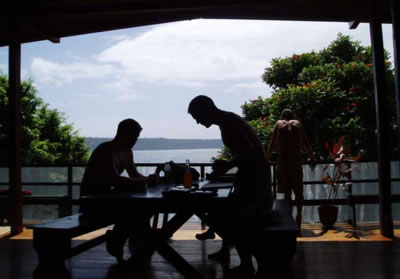
A Seattle veteran was shot dead by a police officer this week after trying to force his way into a house where his wife and child were staying.
The Seattle Times reported that there were two guns found, one on his person and the other a few feet from his body. Reports said that the Iraqi war veteran was angry and unable to deal with a failing marriage, feeling used by the military after being discharged from the Maine Corp for the third time. Family members told the Seattle Times that he always felt better when he was armed, even though he had already returned to civilian life.
This is only one example of neglected Post-traumatic Stress Disorder (PTSD). The signs are apparent, say specialists, changes in behaviors can occur such as dependency on alcohol, domestic abuse and extreme anxiety. According to Seattle’s Swedish Medical Center’s website PTSD is a kind of brain trauma. It is the fear of a memory of a person who has been harmed or threatened in the past such as a car accident, rape or combat.
But, what is the military doing to help the 160,000 new U.S. veterans? It seems that it is doing little or nothing to help discharged soldiers resume their lives that they may have had before they had their tours. After living several years in a hostile foreign country, families are asking that the military help make the transition from soldier life to civilian life easier.
Yet, one Chicago medical center is taking the matter into their own hands. They are fighting PTSD by virtual reality, stimulating real combat scenarios for the patients. It’s called “Virtual Iraq”. Patients are faced with realistic scenes that are similar to those experienced in the Middle East. In doing this, doctors hope to rid their patients of the reoccurring nightmares, flashbacks and other ailments that seem to plague those with PTSD.
But family members say that it should be up to the military to spot those who are showing signs of the disorder and care for them accordingly. The military should be able to care for the soon to be returning soldier and help them learn how to act as a civilian. They should be able to walk down the streets of their home towns after being discharged without feeling the need to be armed or that they are in danger of someone jumping out at them from an alley way. It was up to the military to train these men and women of service. Now it should be their job to retrain them as civilians.
The Seattle Times reported that there were two guns found, one on his person and the other a few feet from his body. Reports said that the Iraqi war veteran was angry and unable to deal with a failing marriage, feeling used by the military after being discharged from the Maine Corp for the third time. Family members told the Seattle Times that he always felt better when he was armed, even though he had already returned to civilian life.
This is only one example of neglected Post-traumatic Stress Disorder (PTSD). The signs are apparent, say specialists, changes in behaviors can occur such as dependency on alcohol, domestic abuse and extreme anxiety. According to Seattle’s Swedish Medical Center’s website PTSD is a kind of brain trauma. It is the fear of a memory of a person who has been harmed or threatened in the past such as a car accident, rape or combat.
But, what is the military doing to help the 160,000 new U.S. veterans? It seems that it is doing little or nothing to help discharged soldiers resume their lives that they may have had before they had their tours. After living several years in a hostile foreign country, families are asking that the military help make the transition from soldier life to civilian life easier.
Yet, one Chicago medical center is taking the matter into their own hands. They are fighting PTSD by virtual reality, stimulating real combat scenarios for the patients. It’s called “Virtual Iraq”. Patients are faced with realistic scenes that are similar to those experienced in the Middle East. In doing this, doctors hope to rid their patients of the reoccurring nightmares, flashbacks and other ailments that seem to plague those with PTSD.
But family members say that it should be up to the military to spot those who are showing signs of the disorder and care for them accordingly. The military should be able to care for the soon to be returning soldier and help them learn how to act as a civilian. They should be able to walk down the streets of their home towns after being discharged without feeling the need to be armed or that they are in danger of someone jumping out at them from an alley way. It was up to the military to train these men and women of service. Now it should be their job to retrain them as civilians.












 The squeaking of sneakers on the shiny gym floor instantly set the mood for fun as the players pile in and take their places behind the far black line on either side of the court. The co-ed teams fidget as they wait for the whistle to blow. Once the high pitched sound rings in the ceiling the players are off, grabbing the rhino skin balls and searching for their first target.
The squeaking of sneakers on the shiny gym floor instantly set the mood for fun as the players pile in and take their places behind the far black line on either side of the court. The co-ed teams fidget as they wait for the whistle to blow. Once the high pitched sound rings in the ceiling the players are off, grabbing the rhino skin balls and searching for their first target.







